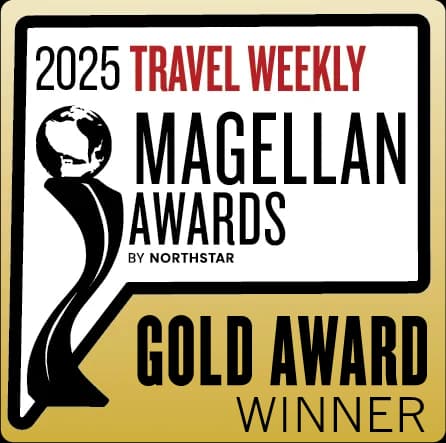Car Rental in Prague

Cheapest car rental rates




































































































Why book with us?




- Cheapest car rental rates
- Why book with us?
- Travel information
- Why rent a car in Prague?
- One-way car rentals in Prague
- Top ways to enter Prague
- City facts
- Top sights and activities
- Traffic and parking
- Toll roads
- Ideas for day trips
- Most popular cars
- Further destinations
- Car rental prices in Prague
- Top 3 cities near Prague
- Top 6 locations near Prague
- Map of top car rental locations
- When to book in Prague and for how long?
- Car rental information
- Most popular car models of rental suppliers
- Here's what travelers say about renting a car in Prague
- Car rental statistics
- Top 24 suppliers in Prague in 2025
- Award-winning service
Travel information
Why rent a car in Prague?
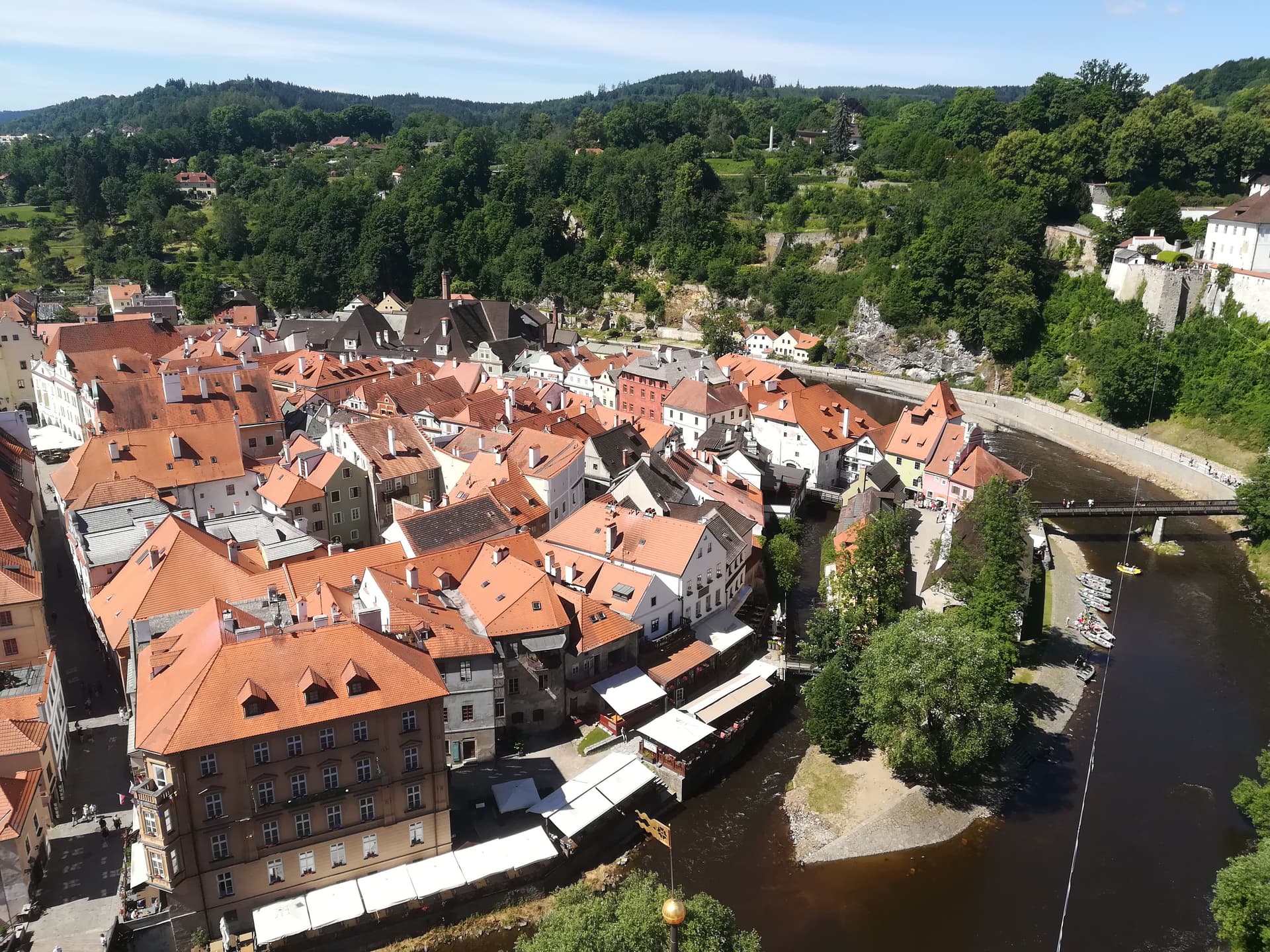
Prague is one of the most visited cities in Europe due to its immaculate Old Town and the ancient Prague Castle. Multitudes of tourists arrive in the city every year. While this may seem unappealing to some, it is certainly for good reason. The city is a well-preserved historic jewel that could be wandered around for days on end.
If making a short trip and staying in the center of the city, a rental car will be somewhat of a burden. Of course, if visiting for more than a couple of days, you will undoubtedly want to leave the crowds of tourists. Thankfully, the rest of the Czech Republic is also worth exploring with some prime locations that see a tiny fraction of the tourists as the city of Prague does. This is where choosing to rent a car becomes a great choice. From the well-maintained motorways to small scenic roads, driving in the Czech Republic is an unforgettable experience and a welcome reprieve from the city.
One-way car rentals in Prague
The most popular one-way rental options for pick up in Prague and drop off in another city include:
- From Prague to Warsaw - 14 offers from $126.21 per day
- From Prague to Krakow - 7 offers from $110.39 per day
- From Prague to Katowice - 7 offers from $107.08 per day
- From Prague to Wroclaw - 7 offers from $107.08 per day
- From Prague to Bratislava - 13 offers from $83.98 per day
Top ways to enter Prague
Prague Airport, also known as Václav Havel Airport Prague, is the main gateway to the city for those traveling by air. The airport i is located 12 kilometers (7 miles) west of the city center and has two terminals for passengers. Terminal 1 serves flights to and from outside the Schengen zone, while Terminal 2 serves flights within the Schengen Zone. The terminals are connected landside so no shuttle is needed to transit between them. The rental desks for all suppliers are located across from the terminals in Parking C. Avoid exchanging money at the airport (see Useful City Facts for more information).
Pardubice Airport, located about 100 kilometers from Prague, is also an option for some of those arriving by air, mainly from London-Stansted, Moscow or Saint Petersburg. Europcar is the only rental provider serving the airport with a rental desk located inside the terminal.
The city’s main train station is Praha hl.n. (Praha hlavní nádraží or the central station). It is located just a kilometer and a half from the Old Town Square. Prague has international connections to most major European cities. The route from Berlin to Prague is particularly scenic, passing through the scenic Ore Mountains. Sixt and Budget have rental offices inside the train station. Avoid exchanging money at the station (see Useful City Facts for more information).
The city’s main bus station is Praha Florenc ÚAN. The rental locations of Ace, Nu car rentals, and Rentis are all very close to the station. Europcar’s Old Town location is also within easy reach. As in the train station and airport, avoid exchanging money in the bus station and instead find a place to do so in the city.
Finally, for travelers that plan to stay in the center of Prague for a few days and then take a trip or trips to other parts of the country, it may be convenient to pick up a rental car before the trips and avoid having it in the city. Europcar, with its location in the Old Town, is the most convenient supplier for this. Ace, Nu Car Rental, and Rentis also have locations in the city center. Budget and Sixt’s train station locations are also a good option. For business travelers, Enterprise’s location at the Prague Congress Center may be useful (for others, not that this location is just outside of the city center).
City facts
An excellent source for information about traveling in Prague is the Honest Guide Youtube channel. With new episodes weekly, Janek and Honza share many tips for visiting the city, including where to go, what to see, where to eat, and how to avoid being ripped off.
The Czech Republic is one of the European Union countries that does not use the Euro. The official currency is the Czech Crown (Kč locally and CZK internationally). Unfortunately, this gives rise to both tourist confusion and the opportunity for swindlers to rip tourists off.
Some exchange offices in the city have long been notorious for tricking tourists into exchanging their money at poor rates. From putting the sell rate first or bigger to hide the much worse buy rate (if exchanging euros to crowns, the buy rate is the rate to look at) to advertising rates that are only good if you exchange large sums of money,
The Official Tourist Website for Prague lists the current exchange rates. Try to find a rate that is as close to what is listed there as possible. If you are in doubt, use this map of “honest” exchange places that was put together by the Honest Guide.
In April 2019, a new law came into effect that now allows customers to obtain a refund (that is, get their money back) from any exchange office within three hours of the transaction. Exchange offices will claim ignorance of this law and/or fail to give you a receipt for the original transaction. You should always make sure to get a receipt and firmly stand your ground when requesting a refund. The exchange office is allowed to offer you a better exchange rate, though it is likely they will attempt to still offer a rate below the market rate.
Do not change money at the airport or train station. Just don’t do it. It is possible to pay with a credit card almost everywhere. In the case you absolutely need cash, you can withdraw CZK from ATMs, though try to use one from a large bank to avoid a commission. Alternatively, head to McDonald's, buy something and pay with euros. You will be given the change in Crowns at an exchange rate that is better than what you would get from any of the currency exchanges in the airport or train station.
At both ATMs and when paying with a credit card be careful of any offer to covert the purchase amount to your home currency. The rates offered with this service or invariably worse than those offered by your bank. You should therefore always decline any currency conversion offers.
Do not exchange money on the street. All of those that solicit tourists to exchange money on the street are scam artists that will give you worthless currency (such as old Belurussian Rubles). Be a good Samaritan and warn anyone you may see engaging with these scammers and/or call the police on them.
Almost all restaurants offer a daily lunch special from 11 AM to 2 PM on weekdays. Unfortunately, the menus are almost always only in Czech. If you are adventurous, ask for the menu politely and choose something at random. You will undoubtedly have a great meal at a crazy low price.
Street food vendors at the main square of the Old Town should be avoided. A popular tactic of theirs is to advertise the price of the food per 100 grams and then serve you much more than that at an unexpectedly high price. For the same money you may end up spending at one of the stalls, you could have a nice meal at one of Prague’s many fine restaurants.
A very popular (with tourists) treat found in Prague is trdelník or chimney cake. This is not a traditional Czech food but actually comes from Hungarian Transylvania where it is known as kürtőskalács. At the same time, it is delicious.
Top sights and activities
Many of the tourist attractions in Prague, especially the Old Town, Prague Castle, and the Charles Bridge, are incredibly crowded year-round. If you would like them to yourself, it is possible, just visit them early in the morning and enjoy the sunrise at the same time!
- Prague Castle - The prime tourist attraction of the city is the largest ancient castle in the world. The castle dates to the 9th century and has been expanded, renovated, and rebuilt through the ages as it served as the seat of the kings of Bohemia and Holy Roman Emperors. Today it is the residence of the President of the Czech Republic. The castle offers different tickets that include entrance to different parts, though some can be seen for free including the inside of the cathedral. The castle is extremely crowded during the attractions’ opening hours. It is best to visit again before they open or after they close (the castle itself is open from 5 AM until 11 PM or midnight, depending on the season.
- Old Town - Known as Stare Mesto in Czech, the Old Town is the oldest part of the city. It is packed with historic buildings, including those of the Old Town Square and the Tyn Cathedral. The Astronomical Clock is impressive, though the Glockenspiel show that tourists wait for on the hour every hour is not really worth going out of your way for. If find yourself walking by several times, though, you'll know it is almost time as the crowds grow. The crowds of tourists tend to file in a hoard from Charles Bridge to the Old Town Square. It is, however, entirely possible to escape the hoard by taking any smaller side street or exploring the courtyards.
- Charles Bridge - Most people’s route from the Old Town to the Prague Castle or vice versa takes them across this famous bridge. Construction started in 1357 and until 1841, it was the only bridge crossing the Vltava River in Prague. The bridge is lined with 17th-century statutes. The Old Town Bridge Tower is a popular attraction which can be climbed. The bridge is crowded all day long all year long. To experience it with few tourists, wake up early and catch the sunrise while on it.
- Jewish Quarter - Surrounded by the Old Town, the Jewish Quarter is where Jewish people were made to live starting in the 13th century. Though many buildings were built over during the 19th and 20th centuries, many important sites remain including six synagogues, the Jewish Ceremonial Hall and the Old Jewish Cemetery. Most of these are a part of the Jewish Museum which has one entrance ticket that covers them all. The Old-New Synagogue, along with the Jerusalem Synagogue in the New Town, is administered by the Prague Jewish Community and have a separate entrance fee.
- Malá Strana - On the opposite side of the river from the Old Town and below the Prague Castle, Mala Strana or the Lesser Town is another popular place amongst tourists. Besides meandering up the streets to the castle, travelers can also visit the Vrtba Garden, the National Gallery, and the Franz Kafka Museum.
- Vyšehrad - The second and oft-overlooked castle in the city is located south of the Old Town. To reach it, just walk along the right bank of the Vltava river. The castle was briefly the seat of the Bohemian Crown but later fell into disrepair. The current state of the castle comes from later remodeling by Austrians when it was used as a military train ground. The castle is a breath of fresh are (quite literally) compared to Prague Castle as only a tiny fraction of tourists visit it.
- Beer - The Czech Republic is known for its beer brewing tradition. Tap beer can be found all around the city at its numerous pubs, restaurants and beer gardens for very reasonable prices (a good rule of thumb is that any place that isn’t a microbrewery charging much more than 50 CZK for a 0.5l beer is probably a tourist trap). Signs outside the establishments note brands, prices, and what many often mistake for alcohol percentage. This number is actually degrees Plato, a measurement ratio of sugars to water before fermentation. Essentially, the higher the number is, the stronger the taste, browner the color, and the higher the alcohol content will be. A 10° beer will usually be about 4% alcohol while a 12° beer will be about 5%.
- Nightlife - Though it might not be primarily known for its nightlife like places such as Ibiza, Prague is nevertheless a place that stays alive when the sun goes down. Aside from the aforementioned beer halls and gardens, Prague has numerous cocktail bars, wine bars, and clubs. No matter what music one prefers, there is likely a club that caters to it. Many young people come to Prague to see the sites during the day and dance the night away. Many locals live in the Old Town and other popular party areas, though. So do be courteous to them during the middle of the night.
- Lennon Wall - Tucked away in Mala Strana, the Lennon Wall is a wall near the French Embassy that has been covered with graffiti since the 1980s. The original graffiti was inspired by John Lennon. It has since been covered with all kind of graffiti, completed painted over and covered with graffiti again. Most recently (May 2019), it was repainted by a group urging governmental action on climate change. Though when you visit, this is likely to have changed. A great stop if you are nearby, though expect lines of tourists taking pictures with the wall for Instagram.
- Petrin - Located southwest of Prague Castle, Petrin is a hill that is a popular recreational area. The hill is a prominent feature seen from the Old Town side of the river. A cast iron tower that seems like a miniature Eiffel Tower sits on the hill. It can be climbed and panoramic views can be taken in from the top. In addition to walking, the summit can be reached by a funicular from Mala Strana below.
- Žižkov Television Tower - The second ugliest building in the world (according to the defunct VirtualTourist) sits on top of a hill in the Žižkov neighborhood that is east of the Old Town and can be seen from most of the city. The 216-meter high tower has an observatory 93 meters above the ground. It also has a restaurant and bar along with a separate bistro. Perhaps the most unique thing the tower offers is its One Room Hotel, an exquisite hotel room that overlooks the city. Though the hotel costs 849€ a night, guests are required to pay extra for guarded parking.
- Náplavka Riverbank - Just north of Vyšehrad is an area along the riverbank that is very popular amongst locals in the summertime. The riverfront has many boats that are bars where visitors can relax and have a drink on the river.
- National Museum. Both one of the most impressive buildings in the city (where its main branch is located) and an important cultural institution, the National Museum is a great place to learn about all things Czech. Marvel at the museum’s interior made up of ornate halls and domes, then dive into the almost endlessly diverse collections covering everything from paleontology and anthropology to ethnography, music, and art.
Traffic and parking
Parking in the center of Prague is as difficult as in any other large European city. Most hotels have parking available for a daily fee, though this may not be the case for some hotels in the Old Town. Parking garages are available throughout the city. Expect to pay 25€ to 30€ per day in the city center and less further out. Some garages have in-out privileges similar to hotel parking. Park and Ride (P + R) lots are available on the outskirts of the city, though it is not possible to leave a car there overnight.
Parking on the street near the center of the city can be problematic. The city has three different parking zones denoted by colors.
The most useful zone for visitors is the Orange Zone, in which you can park for a maximum of three hours 80 CZK an hour in the very center of the city (or 60 CZK in Price Sector 2).
You can also park in the Purple Zone (mixed use) for the same price for a maximum of 24 hours. Finally, the Blue Zone is residential but can be used by visitors, too. It is only possible to pay via the Virtual Parking Clock web app in this zone, though.
The parking machines in the Orange and Purple Zones accept Czech Crown coins, 1 and 2 euro coins, or credit cards. As parking is controlled via license plates, you must enter the license plate number of your rental car and no paper ticket is required to be displayed. It is also possible to pay for parking in any zone with the Virtual Parking Clock app.
As with all other European Countries, drunk driving is not tolerated. Though the Czech Republic is well-known for its beer, do not drink it and drive afterward.
Toll roads
Like other Central European countries, the Czech Republic has a vignette system instead of tolls for its motorway network. If picking up a rental car in the Czech Republic, a vignette sticker should be on the car already. Some suppliers charge either a one-time or daily fee for the vignette while others include it in the rental price. Be sure to check with your supplier for their specific policy.
If bringing a rental car from a neighboring country into the Czech Republic, a vignette will need to be purchased. If entering on the major motorways, vignettes can be purchased at the first rest area. If entering on smaller roads, they can be purchased at any post office or almost any gas station. Of course, avoiding motorways, and therefore the need for a vignette, is also possible.
Vignettes are available for annual, monthly, and 10-day time periods. The 10-day vignette costs 310 CZK and the monthly 440 CZK (as of May 2019).
There are no tolled bridges or tunnels in the country.
Ideas for day trips
- Cesky Krumlov - By far the most popular destination for a day trip, tour buses leave the city almost by the minute destined for the ancient town. Of course, with a rental car, you would have the option of arriving before the crowds or staying after they head back to the city. Much like Prague itself, tourists flock to this town for good reason as the 13th-century castle and old town are incredibly scenic.
- Pilsen - Just an hour and a half west of Prague, Plzen (or Pilsen in English) is home to the pilsner variety of beer. The city has a lovely old town square which includes the 13th-century St. Bartholomew’s Cathedral with the highest tower in the Czech Republic. The most popular activity is to visit the famous Pilsner Urquell brewery. Be sure to book a tour ahead of time. Adults are also offered the chance to try some of the beer. Also available at the brewery museum are yours of the city’s historical underground passages. Be sure to pack a jacket for this tour as the temperature underground remains at about 6°C even at the height of summer.
- Kutna Hora - Just over an hour’s drive east of Prague, Kutna Hora was once the second-largest Czech city due to silver mining. Now it is a popular tourist destination due to the two churches and old town that are UNESCO World Heritage Sites. In addition to the gothic Church of St. Barbara and the Cathedral of Our Lady, near the town is the Sedlec Ossuary. This chapel contains the skeletons of an estimated 40,000 to 70,000 people which have all been made into furniture and decoration. This is, unsurprisingly, one of the most visited destinations in the entire country.
- Karlovy Vary - Located around 130 kilometers west of Prague near the border with Germany, Karlovy Vary is another popular tourist destination. In addition to the town’s historic architecture, the city is famous for its hot springs. There are 13 large springs and lots of smaller ones. The highest streaming geyser sits in the the communist-era Hot Spring Colonnade.
- Bohemian Paradise - Just 100 km to the northeast of Prague, the Bohemian Paradise is a protected area that offers hiking or biking through incredible natural landscapes. Numerous chateaus and castles can be found in the area, too. A great resource for cycling and hiking maps is mapy.cz.
- Bohemian Switzerland National Park - If seeking an active day-trip from the crowded city, the Bohemian Switzerland National Park along the border with Germany is an excellent destination. Among the sites in the park are the Pravčická brána, the largest natural sandstone arch in Europe. Many other interesting rock formations can be found in the park. See the previous website to plan your hiking routes.
- Brno - The second largest city in the Czech Republic sees much fewer tourists than Prague but also has an impressive amount of old buildings. It can be reached in just over two hours along the D1 highway. The nearby gorges and caves of the Moravian Karst along with the Moravian vineyards are also worth the trip from Prague.
- Ceske Budejovice - Around two hours south of Prague, along the way to Cesky Krumlove, Ceske Budejovice is a nice town in which to take a break from the crowds of Prague and Cesky Krumlov. Its Old Town Square is impressive. The town is also home the Budweiser Budvar Brewery, whose beers are sold as Budweiser in Europe and under other names in the Americas due to Anheuser-Busch’s Budweiser. It is significantly different than the American version of Budweiser. A tour of the state-owned brewery is certainly one of the top things to do.
- Terezin Memorial - Less than an hour’s drive north of Prague, Terezin was the location of one of the Nazi concetration camps of WWII. The town is also the location of the Small Fortress, a political prison of the Prague Gestapo during the war. A combined tick can be purchased for visiting the Small Fortress, Ghetto Museum and the MAgdeburg Barracks.
- Karlštejn Castle - Just 20 kilometers west of Prague lies the most visited castle in the Czech Republic. The castle is located in the Cesky Kras, a protected natural landscape with many hiking and biking trails. Originally built by Charles IV in the 14th century, the castle is a Gothic fortress that is certainly worth the visit. If you want to avoid the tourist traps of the village, it’s possible to hike through the surrounding landscape to the castle.
Most popular cars
Although the Czech Republic does have mountains, it does not have a significant amount of mountains roads that would require specific vehicles. The country is also quite compact, with almost every site easily reached in a day-trip from Prague. Therefore, smaller cars are preferred by renters. The most popular class of rental car is the economy class which include cars like the Volkswagen Polo and the Skoda Fabia. This is closely followed by the compact class of which the Volkswagen Golf is a good example. Finally, many renters also prefer a mini, like the Skoda Citigo, which makes parking in the city a breeze.
Further destinations
In most cases, it is allowed to take a rental car from the Czech Republic to Germany, Poland, Slovakia, Hungary, or Austria. Vice versa is also true, for example, it is usually possible to take a rental car from Germany to Prague. International one-way rentals are possible if starting or ending in most neighboring countries, though there's an extra fee for this, which is sometimes quite hefty.
- Munich - The capital of Bavaria takes about four hours to reach from Prague. The third-largest city in Germany, Munich is a major tourist destination and gateway to the Alps. In addition to the famous architecture of its old center, which was unfortunately destroyed during WWII and had to be rebuilt, the city is famous for its beer culture and Oktoberfest. There are six major breweries each with their own beer gardens and halls, the Hofbrauhaus Am Platzl being the most famous.
- Dresden - Just a two-hour drive from Prague, the capital of Saxony is famous for its Frauenkirche, Zwinger Palace, and Schloss. Bruhl’s Terrace overlooking the Elbe River is also a large draw. Though the city’s old town is impressive, it also boasts the ignominious distinction of having one of only two sites delisted from UNESCO’s World Heritage List, which was the Elbe Valley. It was removed due to the construct of a bridge across the Elbe. Its Pillnitz Palace, meadows, and many monuments and parks are still certainly worth a visit.
- Berlin - The capital of Germany is less than four hours away from Prague. As the city was both not incredibly important in medieval times and due to the destruction caused by later wars, not many ancient buildings can be found in it. Berlin is, however, a renowned destination for history buffs due to its more modern history starting with it becoming the capital of Prussia in 1701 and ending with its reunification after the Cold War. Berlin is also a major tourist destination for its festivals, art offerings, nightlife, and culinary scene.
- Vienna - The capital of Austria and former capital of the Austro-Hungarian Empire, Vienna is both steeped in history and a modern world-class city at the same time. It takes about three and a half hours to drive to Vienna from Prague through Brno. In addition to visiting Schonbrunn Palace, seeing the art in Belvedere Palace, be sure to enjoy the amusement rides at Prater and take the elevator up Donauturm for excellent views of the city. Note that the famous Vienna State Opera and the Vienna Philharmonic Orchestra travel during July and August. Many hawkers wigs all year round, but particularly during this time, to try to sell concerts to tourists. It is left as an exercise to the reader to determine what the quality of these concerts must be like.
- Bratislava - Once somewhat a secondary capital when the Czech Republic and Slovakia were one country, Bratislava is now the capital of an independent Slovakia. It’s Old Town and Hrad (Castle) are impressive, but perhaps could be a letdown when coming from Prague. The city is certainly worth a stop if passing through, but the real gems of Slovakia, its mountain-top castles and pristine nature, lie to the east. An excellent itinerary would include the city, the Tatra Mountains and then the tourist jewel of Poland, Krakow.
- Budapest - Travel further down the Danube (of sorts) from Vienna and Bratislava to reach the capital of Hungary. As the Hungarian language is unlike any other in the world, a visit to the capital city would be unique in at least this respect. The city is also steeped in history, with the two side formerly being separate cities, Buda and Pest. The Buda side includes the Buda castle with excellent views of the river. The Pest side is the main center of the city. Aside from the typical museums and monuments, the city is also teeming with thermal baths, which it is worth making the five and a half hour drive from Prague for.
- Krakow - Another medieval city with an immaculate Old Town that is an extremely popular tourist destination, Krakow is about 450 kilometers (280 miles) east of Prague, though the best driving route (through Brno, Ostrava, and Katowice) is about 100 kilometers longer. If Prague doesn’t satisfy your want of medieval buildings, perhaps Krakow could help. Many also make a trip to the memorial at Auschwitz, the symbol of the Holocaust.
- Leipzig. Another notable former East German city, Leipzig has been growing impressively over the last decades. The city’s scientific, entrepreneurial, and innovative output has led to it being dubbed the ‘New Munich’, and cultural and entertainment nous has followed. Not that it ever truly went away, as landmarks like the Old Town Hall and Bach Museum will testify. The drive from Prague takes about three hours.
- Ostrava - Historically best known for heavy industry, the northeastern city of Ostrava has been busy reinventing itself as a hub of culture. The third-largest in the Czech Republic, it boasts notable buildings, large green areas, and mines that have been turned into heritage attractions, as well as the nearby Beskid mountains, one of the nicest nature areas in this part of the country. The drive from Prague to Ostrava takes about four hours.
Car rental prices in Prague
- Small cars - from $13 per day
- Medium cars - from $13 per day
- Premium cars - from $87 per day
- Station wagons - from $14 per day
- SUVs - from $12 per day
- Large cars - from $16 per day
- Vans - from $30 per day
- Convertibles - from $57 per day
Learn more about our Editorial Policy.
Top 3 cities near Prague
- Karlovy Vary100 km / 62.14 miles away
- Brnofrom $13.78 per day204.7 km / 127.19 miles away
- Ostravafrom $21.83 per day279.4 km / 173.61 miles away
Top 6 locations near Prague
- Prague (Downtown)from $15.87 per day10.9 km / 6.77 miles away
- Brno Train Station197.3 km / 122.6 miles away
- Brno–Tuřany Airportfrom $13.78 per day204.7 km / 127.19 miles away
- Ostrava Airportfrom $21.83 per day279.4 km / 173.61 miles away
- Ostrava-Svinov Train Stationfrom $32.41 per day284.2 km / 176.59 miles away
Map of top car rental locations
When to book in Prague and for how long?
What is the cheapest month to rent a car in Prague?
Car rental prices in Prague vary by time of year. This graph shows the average prices per month to help you find the best time of year to rent.
Saver's insights
| Cheapest monthFebruary | Most expensive month July | ||
| Average price $24 | A good deal $15 | Cheapest supplier RENT PLUS | Cheapest car type SUVs |
$23
in January
$22
in February
$23
in March
$27
in April
$28
in May
$28
in June
$44
in July
$41
in August
$25
in September
$23
in October
$24
in November
$31
in December
The cheapest month to rent a car in Prague is February (when prices average $21.93 per day). This is 9% cheaper than the yearly average and 51% cheaper than renting in July (when prices average $44.42).
This information can help you identify the low season. But these are only average numbers. How much your car rental will cost will depend on the type of vehicle you rent, how long you’ll rent it for, and how far ahead you book. Simply enter your dates in the form at the top of the page to see the exact prices.
What's the most popular month to rent a car in Prague?
Based on the number of searches by our customers, the most popular month for renting a car in Prague is August, and the least popular is February.
0.7 times in January
0.6 times in February
0.7 times in March
1.1 times in April
Same as average in May
1.2 times in June
1.4 times in July
1.6 times in August
1.2 times in September
Same as average in October
0.7 times in November
0.9 times in December
What’s the usual rental length in Prague?
How long travelers keep their rental cars for varies from month to month: in June, the average renter keeps their car for 11 days, and in January, they keep their car for 6 days.
6 days in January
7 days in February
7 days in March
8 days in April
8 days in May
11 days in June
11 days in July
10 days in August
8 days in September
7 days in October
7 days in November
7 days in December
Car rental information
| 📍 Car rental locations | 5 |
| ✈️ Airport locations | 1 |
| 🔥 Popular suppliers | RENT PLUS, NUCarrentals, Carwiz, Europcar, Budget |
| 🚗 Popular car types | SUVs, Small cars, Medium cars, Station wagons |
| 🤑 Lowest price | $12 per day |
| 👛 Cheapest supplier | RENT PLUS |
Most popular car models of rental suppliers
| Rental Supplier | Model | Doors | Luggage | Type |
|---|---|---|---|---|
| RENT PLUS | Skoda Fabia | 5 | 1 | Small car |
| RENT PLUS | VW Golf | 5 | 2 | Medium car |
| RENT PLUS | Skoda Karoq | 5 | 3 | SUV |
| RENT PLUS | Toyota Yaris | 5 | 1 | Small car |
| RENT PLUS | Skoda Fabia STW | 5 | 3 | Station wagon |
| NUCarrentals | Volkswagen Polo | 4 | 2 | Small car |
| RENT PLUS | Toyota C-HR | 5 | 2 | SUV |
| RENT PLUS | Hyundai Tucson | 5 | 3 | SUV |
| RENT PLUS | Kia Ceed | 5 | 2 | Medium car |
| RENT PLUS | Toyota Yaris Cross | 5 | 2 | SUV |
Here's what travelers say about renting a car in Prague

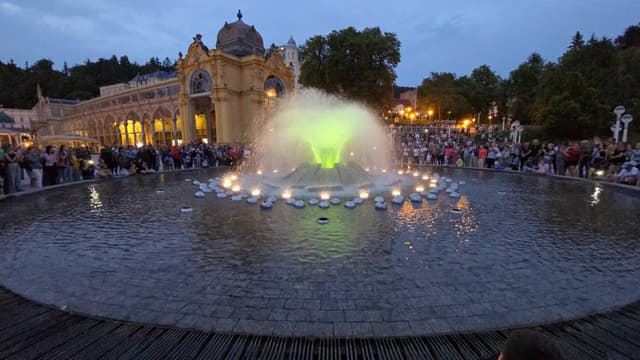
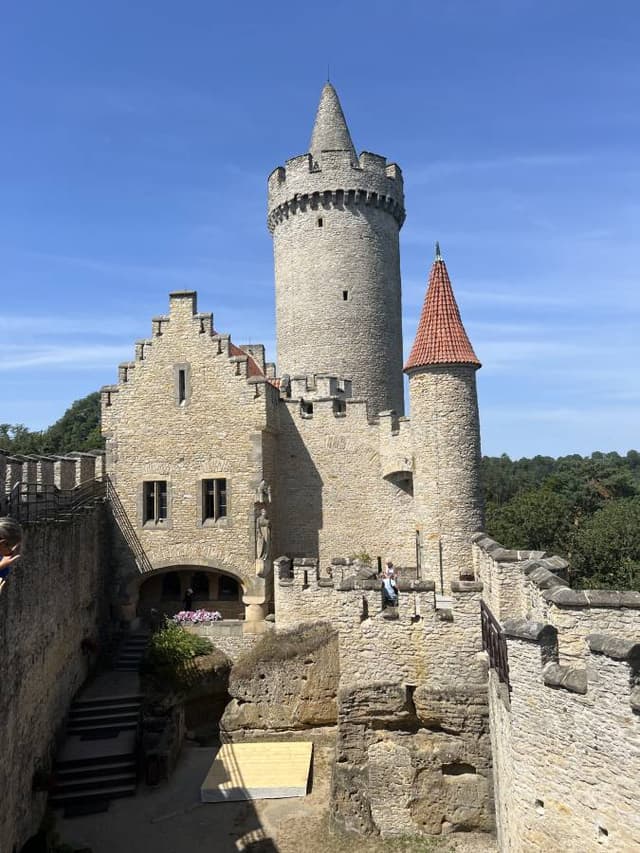
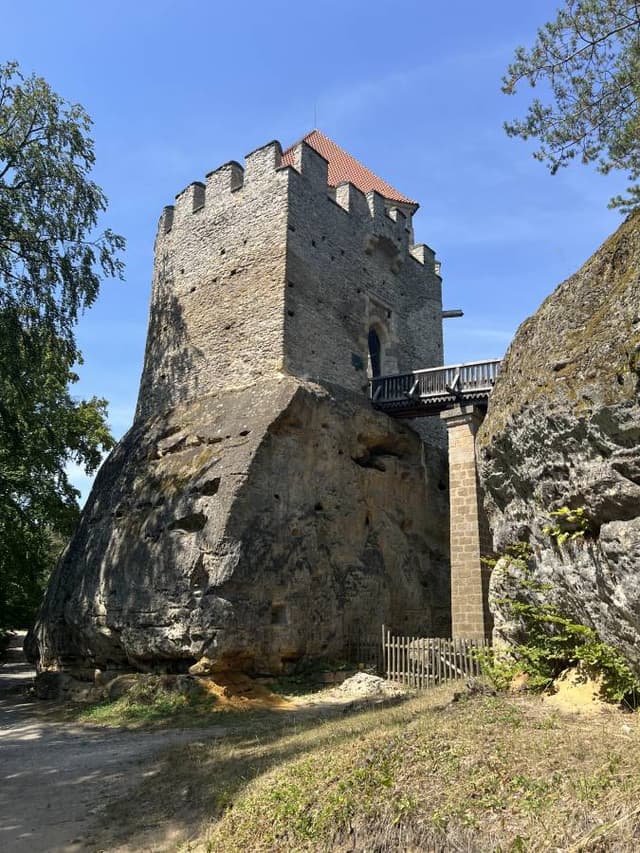
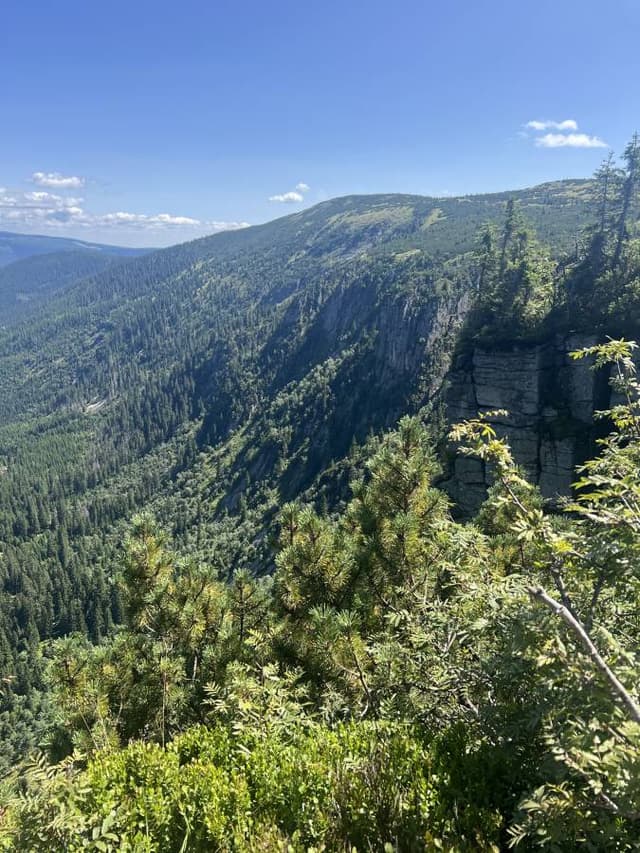
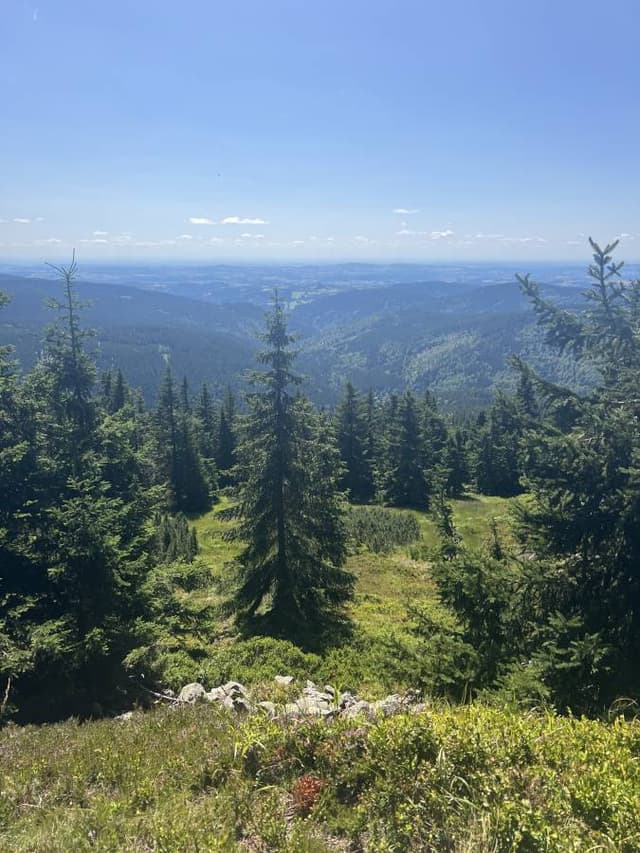




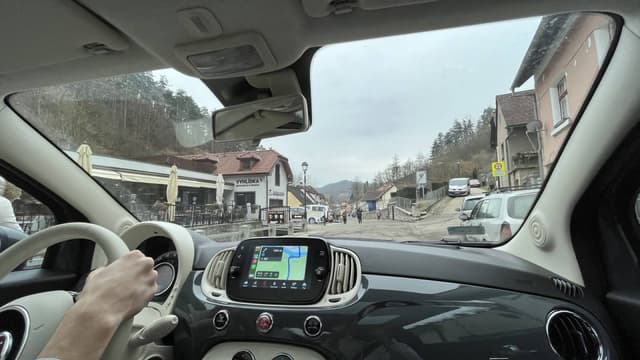
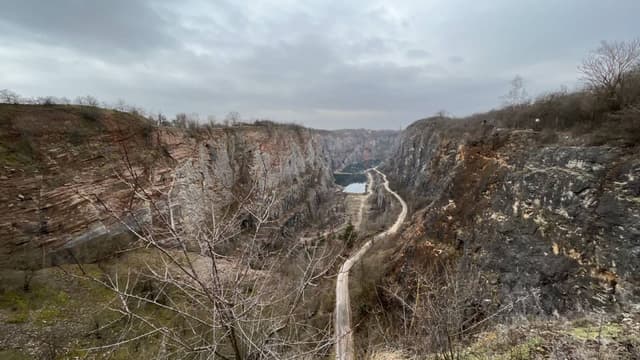
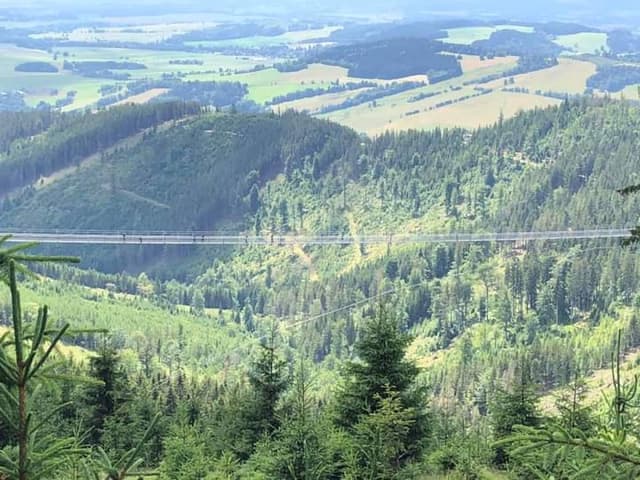
Car rental statistics
Top 24 suppliers in Prague in 2025
























Award-winning service
Highly recommended by our customers
Save even more with our mobile app

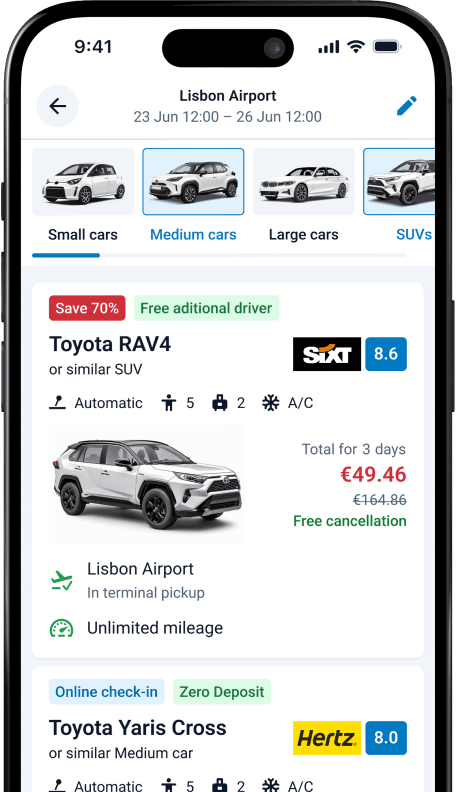
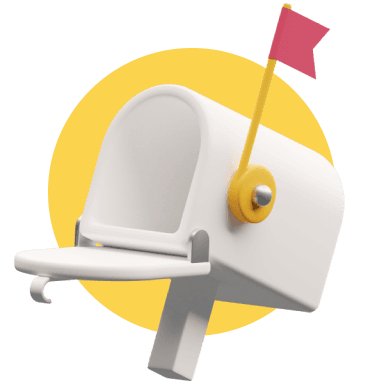
Sign up for our newsletter


